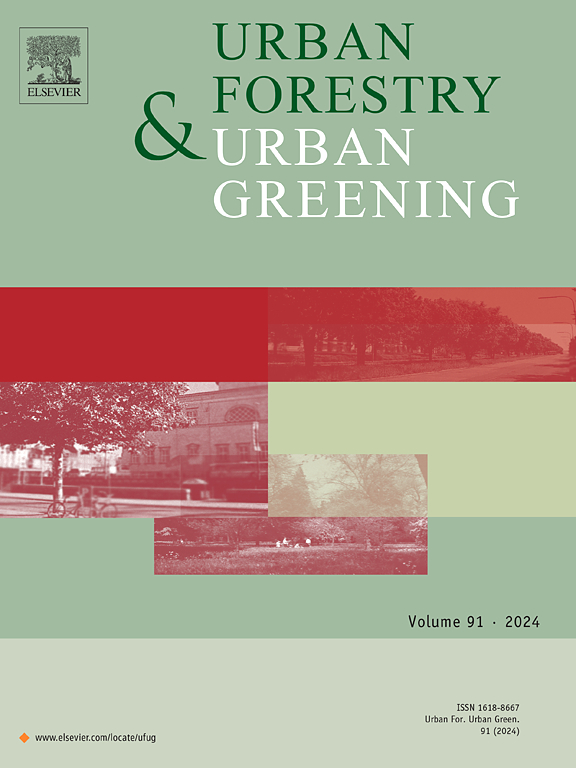Impact of urban green spaces and maintenance regimes on flora and fauna diversity
IF 6
2区 环境科学与生态学
Q1 ENVIRONMENTAL STUDIES
引用次数: 0
Abstract
Urban Green Spaces (UGS) are an important source of food and shelter for urban fauna. This study aims to explore the relationship between maintenance intensity and biodiversity in UGSs found in Singapore. A total of seven parks and six streetscapes were surveyed for their flora and fauna composition. Results showed a high variety of vegetation types in the surveyed UGSs. The diversity of aculeate hymenopterans, butterflies and birds were all influenced by different landscape compositions and configurations. Spontaneous vegetation influenced aculeate hymenopterans as well as butterfly species diversity for both parks and streetscapes. Spontaneous vegetation was observed to increase probable number of species of aculeate hymenopterans (R2 = 0.2705), butterfly species (R2 = 0.4479), as well as bird species found in parks (R2 = 0.4398). Compared to planted vegetation, spontaneous vegetation was observed to have more influence on the probable number of probable bird species found in parks. Flora and fauna succession over was projected over a 10-year period, based on varying maintenance intensities. UGSs with high maintenance intensities to begin with tend to benefit more from higher flora and fauna diversity from a reduction in maintenance in the long run. As maintenance intensity decreases, the amount of spontaneous vegetation in UGSs will increase, adding to the flora and fauna diversity. Findings from this study can be used to inform design and planning for future urban green spaces to preserve and promote biodiversity, such as allocating more spaces within parks to promote natural growth of planted and spontaneous vegetation.
求助全文
约1分钟内获得全文
求助全文
来源期刊

Urban Forestry & Urban Greening
FORESTRY-
CiteScore
11.70
自引率
12.50%
发文量
289
审稿时长
70 days
期刊介绍:
Urban Forestry and Urban Greening is a refereed, international journal aimed at presenting high-quality research with urban and peri-urban woody and non-woody vegetation and its use, planning, design, establishment and management as its main topics. Urban Forestry and Urban Greening concentrates on all tree-dominated (as joint together in the urban forest) as well as other green resources in and around urban areas, such as woodlands, public and private urban parks and gardens, urban nature areas, street tree and square plantations, botanical gardens and cemeteries.
The journal welcomes basic and applied research papers, as well as review papers and short communications. Contributions should focus on one or more of the following aspects:
-Form and functions of urban forests and other vegetation, including aspects of urban ecology.
-Policy-making, planning and design related to urban forests and other vegetation.
-Selection and establishment of tree resources and other vegetation for urban environments.
-Management of urban forests and other vegetation.
Original contributions of a high academic standard are invited from a wide range of disciplines and fields, including forestry, biology, horticulture, arboriculture, landscape ecology, pathology, soil science, hydrology, landscape architecture, landscape planning, urban planning and design, economics, sociology, environmental psychology, public health, and education.
 求助内容:
求助内容: 应助结果提醒方式:
应助结果提醒方式:


